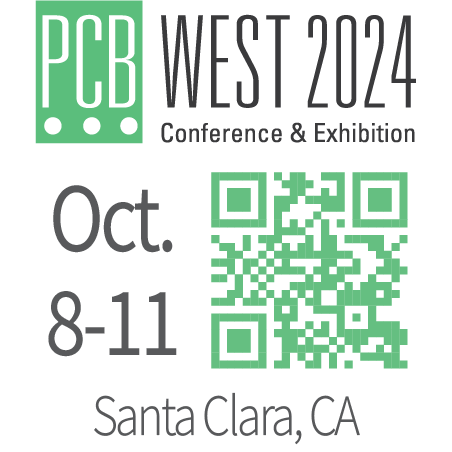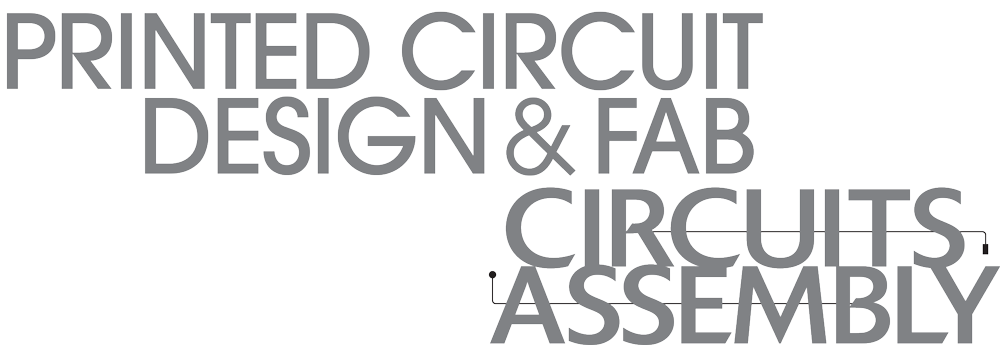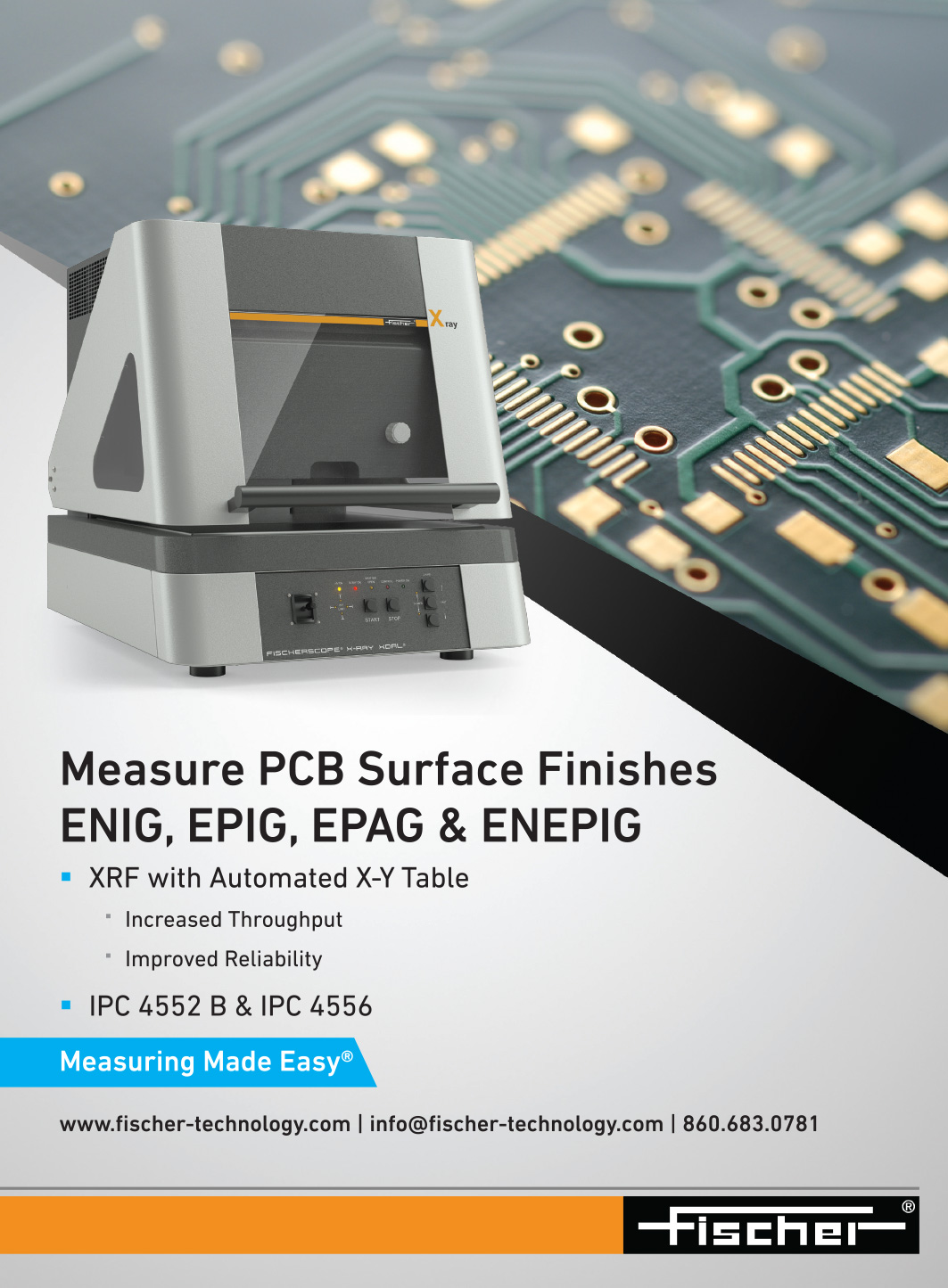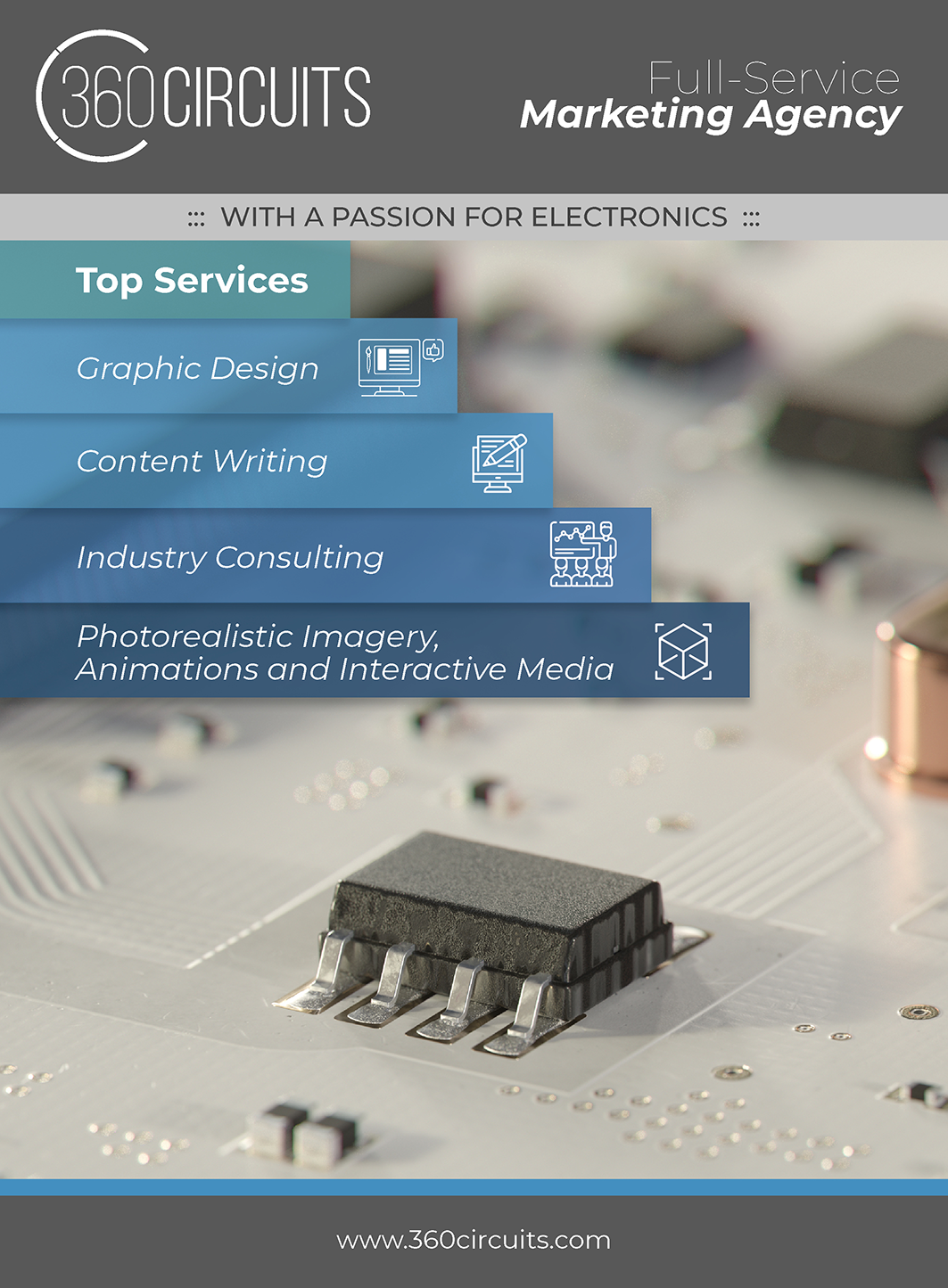


April 2025

This issue of PCD&F / CA is brought to you by:

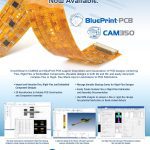

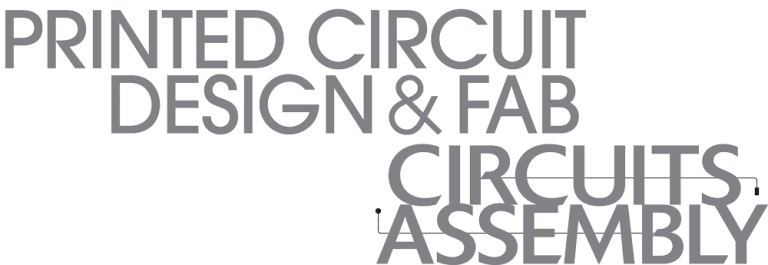



PCEA
PO BOX 807
AMESBURY, MA 01913
PCEA BOARD OF DIRECTORS
Stephen Chavez, CHAIRMAN
Susy Webb, VICE CHAIRMAN
Justin Fleming, SECRETARY
Anaya Vardya, TREASURER
MEMBERS
Jim Barnes
Michael Buetow
Tomas Chester
Douglas Dixon
Juan Frias
Richard Hartley
Matthew Leary
Charlene McCauley
Eriko Yamato
pcea.net
PUBLICATION
- PCD&F/Circuits Assembly digital.pcea.net
WEBSITES
- PCD&F pcdandf.com
- Circuits Assembly circuitsassembly.com
NEWSLETTER
- PCB Update pcbupdate.com
PODCASTS
- PCB Chat pcbchat.com
EVENTS
- PCB West pcbwest.com
- PCB East pcbeast.com
- PCB Detroit pcea.net/pcb-detroit
EDUCATION
- PCB2Day pcb2day.com
- PCEA Training pceatraining.net
- Printed Circuit University printedcircuituniversity.com
AWARDS PROGRAMS
- Service Excellence Awards circuitsassembly.com
- NPI Awards circuitsassembly.com
pcdandf.com

mike@pcea.net
frances@pcea.net
Jeffrey Beauchamp, Peter Bigelow, Robert Boguski, John Burkhert, Jr., Stephen Chavez, Mark Finstad, Geoffrey Hazelett, Nick Koop, Jake Kulp, Alun Morgan, Susan Mucha, Greg Papandrew, Chrys Shea, Jan Vardaman, Gene Weiner
production@pcea.net
nathan@pcea.net
frances@pcea.net
will@pcea.net
frances@pcea.net
mike@pcea.net
jacqueline@pcea.net
PRINTED CIRCUIT DESIGN & FAB/CIRCUITS ASSEMBLY is distributed without charge to qualified subscribers. To subscribe, visit pcdandf.com or circuitsassembly.com and click on Subscribe.
For changes or cancellations to existing subscriptions: subscriptions@pcea.net
PRINTED CIRCUIT DESIGN & FAB/CIRCUITS ASSEMBLY is published monthly by Printed Circuit Engineering Association, Inc., PO Box 807 Amesbury, MA 01913. ISSN 1939-5442. GST 124513185/ Agreement #1419617.
© 2025, by Printed Circuit Engineering Association, Inc. All rights reserved. Reproduction of material appearing in PRINTED CIRCUIT DESIGN & FAB/CIRCUITS ASSEMBLY is forbidden without written permission.

EIPC-PCEA Road Show Brings Experts to You
Since our founding, PCEA has sought to collaborate with other associations wherever we could.
We quickly formed alliances with peers in Australia, Germany, India, Malaysia, Taiwan, Thailand and more. And our founders and leaders sit atop key technical committees in other organizations, such as IPC.
PCEA is the leading printed circuit design organization in the world, and in many instances these ties are intended to fill key technical gaps. We also see a mutual need to ensure our members have access to a wide range of manufacturing experts in every geography.
READ FULL ARTICLE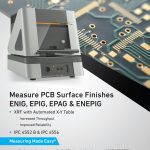
Peter Bigelow Inducted into IPC Hall of Fame
BANNOCKBURN, IL – IPC in March inducted Peter Bigelow, retired president of FTG Circuits Haverhill and a PCD&F/CIRCUITS ASSEMBLY columnist, into its Raymond E. Pritchard Hall of Fame.
 With over 30 years of experience in the printed circuit board (PCB) industry, Bigelow earned recognition for his enthusiastic support of IPC’s mission to serve the electronics industry as an advocate for standards development and committee programs. He served on the IPC board of directors for 11 years, shaping IPC’s strategic objectives and enhancing IPC’s position in the electronics industry supply chain. He later was a director for the SMTA.
With over 30 years of experience in the printed circuit board (PCB) industry, Bigelow earned recognition for his enthusiastic support of IPC’s mission to serve the electronics industry as an advocate for standards development and committee programs. He served on the IPC board of directors for 11 years, shaping IPC’s strategic objectives and enhancing IPC’s position in the electronics industry supply chain. He later was a director for the SMTA.
IPC’s awards its most prestigious honor, the Hall of Fame Award, to individuals who provide exceptional service and make significant advancements for IPC and the electronics industry.
READ FULL ARTICLEGroundbreaking AI Algorithm Learns and Detects Data Patterns
SYDNEY – University of Technology Sydney researchers have introduced a groundbreaking AI algorithm called torque clustering, which brings AI closer to mimicking natural intelligence compared to current methods. This new approach significantly enhances how AI systems learn and detect patterns in data, without the need for human input.
Torque clustering analyzes vast datasets from various fields such as biology, chemistry, astronomy, psychology, finance and medicine, uncovering new insights like identifying disease patterns, detecting fraud and understanding behavior.
The novel algorithm promises a shift in approach, surpassing traditional unsupervised learning methods in performance. It operates autonomously, requires no parameters, and handles large datasets with remarkable computational efficiency.
READ FULL ARTICLECIRCUITS ASSEMBLY Announces 2025 NPI Award Winners
PEACHTREE CITY, GA – CIRCUITS ASSEMBLY in March announced the 2025 New Product Introduction (NPI) Award winners for electronics assembly equipment, materials and software.
The 18th annual NPI Awards recognize leading new products during the past 12 months. An independent panel of practicing industry engineers selected the recipients.
Read Full ArticleZetwerk Electronics Inaugurates $115M EMS Plant Near Chennai
PANNUR, TAMI NADU – Zetwerk Electronics in March inaugurated its largest electronics manufacturing facility in Pannur, Tamil Nadu, the EMS company’s seventh plant overall.
The new facility, part of a Rs 1,000 crore ($115 million) investment, will manufacture control boards for consumer durables and IT hardware. It features advanced production capabilities, including five surface-mount technology (SMT) lines and rigorous testing processes. At full capacity, it will employ 1,200 professionals.
While inaugurating the facility, Union Minister Ashwini Vaishnaw stated, “As Zetwerk launches its seventh factory, we reaffirm our commitment to supporting Indian companies in becoming global leaders.”
READ FULL ARTICLEVexos Opens 45k Sq. Ft. EMS Plant in China
DONGGUAN, CHINA – Vexos, a leading global provider of electronics manufacturing services, has relocated its China operations to a new state-of-the-art manufacturing facility here.
This strategic move enhances Vexos’ production capabilities, efficiency, and capacity to meet the evolving demands of its global customer base.
The new facility spans 4,200 sq. m (45,200 sq. ft.) and features automated surface mount technology (SMT) lines, precision test equipment, and advanced quality control systems. The investment in this site reinforces Vexos’ dedication to delivering high-quality, reliable, and cost-effective electronics manufacturing solutions to its global customer base.
READ FULL ARTICLEFoxconn Building $140M HQ in Central China
ZHENGZHOU, CHINA – Foxconn broke ground in March on a new 288,000 sq. ft. headquarters at this central China city. The company, the world’s largest electronics ODM, plans for the site to be the centerpiece of its internal development for electric vehicles, new energy and energy storage in mainland China.
“Foxconn’s determination and confidence in investing in the Chinese mainland and Henan province remains steadfast,” said Cui Zhicheng, chairman, Foxconn Innovation Industry Development Group.
The company has built products in Henan province since 2010, and its operations there span some 2.8 million sq. m.
PCD&F
Altair named Var Group channel partner for the EMEA region.
Centre Testing International Group (CTI) acquired a 51% stake in Microtek Changzhou, a move aimed at enhancing CTI’s service capabilities in the PCB and CCL industries. CTI Taiwan will now offer more comprehensive testing service.
China has issued more licenses permitting copper smelters to export metal tax-free.
Copper Mountain Technologies, a supplier of RF test and measurement solutions, has transitioned its manufacturing operations to Indiana from Eastern Europe.
Google DeepMind announced two generative AI models designed to power tomorrow’s robots.
Read Full ArticleCA
Delta Electronics plans to invest $500 million in India under the country’s “Make in India” initiative.
Federal Electronics added more than 10,000 sq. ft. of additional manufacturing space at its Cranston, RI, facility to meet growing demand.
Foxconn expects its server revenue to outpace sales from Apple’s iPhones within two years.
Foxconn and the Mexican state of Sonora in March announced a memorandum of understanding covering “Smart City cooperation.”
Fuji announced a strategic partnership with Arch Systems to bring AI guidance to factories and users of Fuji SMT lines worldwide.
Read Full Article
PCD&F
CACI International named Greg Hicks director of hardware production.
Intel named Lip-Bu Tan chief executive, selecting a former board member and longtime Cadence executive to help turn around the semiconductor company.
The president of DuPont’s Electronics & Industrial unit, Jon Kemp, will become chief executive of the future independent electronics public company that DuPont plans to create following its intended spinoff.
Technica USA appointed Jason Perry president.
TTM Technologies named Raj Kumar vice president interconnect solutions engineering, A&D Sector.
CA
Escatec appointed Alessandro Marinai chief operating officer.
Federal Electronics appointed Andrew Davis business development manager.
Luminovo named Matthew Rosenberg sales lead, North America; Sam Mason business & operations lead, North America; and Jack Mason technical account manager.
Naprotek appointed Freddie W. Chavez Jr. vice president of business development.
NextFlex named Stan Farnsworth director of business development.
Read full article
PCEA and EIPC to Hold ‘Design to Fabrication’ Technical Symposium
GELEEN, THE NETHERLANDS AND PEACHTREE CITY, GA – The EIPC (European Institute for the PCB Community) and PCEA will cohost a “Design to Fabrication” Technical Symposium this spring in several Baltic states.
The new event is scheduled to take place on May 6, 7 and 9 in the following cities: Stockholm, Tallinn and Copenhagen.
The presentations include:
- Alun Morgan, Ventec – PCB Materials
- Rick Hartley, RHartley Enterprises – Differential Pair Routing for SI and EMI Control
- Tarja Rapala, EIPC – Ultra-HDI Manufacturing
- Steven Driver, JIVA Materials – Sustainability
PCEA Announces Free Technical Sessions for PCB East
PEACHTREE CITY, GA – Registrants for the PCB East exhibition this April will gain access to five free technical sessions (plus a keynote presentation) ranging from printed circuit design to fabrication and assembly.
 The free sessions take place April 30 at the Boxboro Regency Hotel and Conference Center in Boxborough, MA, and cover topics about AI and PCB design, flex design, simulation, UHDI and more.
The free sessions take place April 30 at the Boxboro Regency Hotel and Conference Center in Boxborough, MA, and cover topics about AI and PCB design, flex design, simulation, UHDI and more.
“Free Wednesday” starts with a session on “AI and Other Upcoming Changes in PCB Design,” by Matthew Leary, founder and president of Newgrange Design.
Read Full ArticlePCEA Announces PCB Detroit Conference Sessions and Tabletop Exhibitors
PEACHTREE CITY, GA – Registrants for PCB Detroit this June can access several technical sessions and a tabletop exhibition, PCEA announced.
 The sessions take place on June 2-3 on the campus of Wayne State University in Detroit, MI, and cover topics ranging from controlling noise, using AI in hardware and PCB design, flex and rigid-flex materials and DfM, HDI via design, and PCB cost drivers and more.
The sessions take place on June 2-3 on the campus of Wayne State University in Detroit, MI, and cover topics ranging from controlling noise, using AI in hardware and PCB design, flex and rigid-flex materials and DfM, HDI via design, and PCB cost drivers and more.
Conference sessions include:
- “Circuit Grounding to Control Noise and EMI” – Rick Hartley, RHartley Enterprises
- “Solving Routing Problems in Digital Boards” – Susy Webb, Design Science
- “HDI Via Design: Planning the Energy Pipelines” – Dan Beeker, NXP Semiconductor
ASSOCIATION NEWS
The PCEA Discord server brings together engineers and designers from around the world on a private channel to discuss technical questions and career opportunities. To join, contact Mike Buetow.
CHAPTER NEWS
Orange County. Armando Saldana, Juan Frias and Terri Kleekamp are planning a series of meetings for later this year. Contact PCEA if interested.
Portland, OR. Bob Carter, vice president of business development and technology at Oak-Mitsui Technologies joined us in March to talk about Embedded Capacitance Laminates in PCBs Impact on EMC, SI, PI and the PCB physical design.
Our next chapter meeting is April 24 at 12 pm PST. John Andresakis from Quantic Ohmega will chat about embedded resistors.

Consumer Electronics Sales Set to Accelerate, Study Says
Maharashtra, India – The global consumer electronics market is expected to grow 6.1% year-over-year in 2025 to $864.7 billion, according to a new forecast.
Market researchers at Fortune Business Insights report that the market, valued at $815 billion in 2024, will expand to $1.47 trillion by 2032, resulting in a CAGR of 7.9% between 2025 and 2032.
Data indicate the rising trend of connected homes is driving penetration of smart appliances globally. Consumers increasingly adopt appliances equipped with voice assistance, Bluetooth and wifi connectivity due to their higher convenience. (more)
Hot Takes
NAND production market conditions seem to be nearing the bottom, as SanDisk will implement prices increases of over 10% starting Apr. 1. (TrendForce)
Taiwanese PCB equipment manufacturers reported revenue rose 10.5% year-over-year in January. (TPCA)
Server revenue reached a record $77.3 billion during the fourth quarter, marking the second highest growth rate since 2019 with a year-over-year increase of 91% in vendor revenue. (IDC) (more)
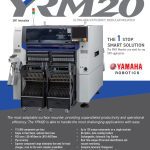
Taxes v. Tariffs: Which is Better for PCB Investment?
A discussion with PCBAA president Shane Whiteside.
I recently sat with Shane Whiteside, president and CEO of Summit Interconnect, in his capacity as chairman of the Printed Circuit Board Association of America (PCBAA), to discuss the state of the PCB industry and the effects of the additional tariffs currently in place.
Whiteside’s PCB manufacturing and leadership career spans several decades, which lends itself well to PCBAA’s mission to advocate for a stronger US PCB industry. The association is working hard to educate and influence those in Washington, DC on the importance of a secure US electronics supply chain.
On its website PCBAA states in the late 1990s the US produced 30% of the world’s PCBs (based on value), but now produces only 4%. When I first joined the PCB industry, cellphones, laptops and many other personal electronics were just coming of age, meaning the volume of electronic products produced that needed a circuit board were considerably less than what is required today.
Read Full Article
The Uncertainty Factor and Customer Service
Preparing for tariffs and other supply chain disruptors.
025 is shaping up to be a transformative year for the electronics manufacturing services (EMS) industry. Tariffs and cuts in government spending influence many EMS providers’ planning sessions, creating considerable uncertainty about how these changes impact individual programs and whether customer sourcing strategies will change. One thing is certain: in times of uncertainty, relationships matter.
As many program managers will likely communicate tariff-driven price increases to their customers this year, it’s essential to enhance that dialogue. Here are key points to focus on:
- Know your facts. Understand the specifics of the tariff impact and when it will come into play for customers.
- Know your mitigation strategy. Be ready to share what steps your team is taking to minimize these cost impacts.
- Anticipate your customers’ questions. Prepare answers and timelines for queries, and be ready to involve relevant subject matter experts as needed.

Implementing Flash Memory in PCB Design
Routing flash has EMI implications. Don’t rush.
Memory comes in different types, and one key distinction is whether the memory remembers anything once the system is shut down. Nonvolatile memory stays around for the next session, while volatile memory lives up to its name and melts away between uses.
A little history with flash memory – used for storing software rather than data. Flash memory is the first kind. Your data are saved for posterity. Time was, the physical manifestation of flash memory was the electrically erasable programmable read-only memory (EEPROM). These chips were typically housed in 20-pin DIP (dual in-line package) formats and could be plugged into sockets for programming. Some versions, known as PROMs (programmable read-only memory), could be programmed only once.
When I worked in telecom, memory devices came in tubes, and the registers would be cleared, “all zeros.” The production line had a gang programmer, but my lab equipment could flash only one at a time. Naturally, this work was done at a static-safe desk, with an ESD strap secured around my wrist to prevent damage to the devices.
Read Full Article
Tech Protectionism: Balancing Security, Industry and Innovation
The automotive high-technology race is now as important to governments as it is to the industry itself.
In September 2024, the Biden administration announced a ban on Chinese connected car technology, including hardware and software. This came on top of existing policies including a 100% tariff on Chinese electric vehicles and withdrawal of the government’s $7,500 EV-purchase subsidy for vehicles built with Chinese-made components. Apparently, after imposing the tariff and purchase disincentive, the government decided more measures were needed to protect the American auto industry adequately, including extending the protection to include software. Hence the ban on connected car tech.
The move is reminiscent of earlier action to block Chinese telecom equipment from American 5G infrastructure. Other countries and territories, including the European Union, stopped short of an outright ban but also took significant steps to limit use of Chinese 5G equipment. In both the 5G and connected car bans, the US government has cited national security as a key concern in its decision. On the other hand, protecting indigenous suppliers is known to be another major objective. Chinese companies are strongly positioned in both sectors and, in the case of 5G, American companies could effectively have been locked out of the infrastructure market; probably fatally, given the longevity of investments by network operators and the interdependencies between the individual items of equipment.
In the runup to last year’s presidential election in the US, both sides agreed – perhaps it was the only issue they agreed on – that trade sanctions were necessary to protect American industry. The incoming Trump administration swiftly announced sweeping tariffs on goods entering the US. And then backtracked on some. While some may expect Trump to adopt a more business-friendly position, the signals on this are somewhat mixed at present. His declared intent to prioritize American interests should bring an element of predictability to the policy making. Except that he is far from predictable.
Read Full Article
Assumption vs. Accuracy: Why We Ask Engineering Questions
The question not asked may be cause for concern.
It is essential for PCB fabricators to ask their customers engineering questions before production. Clarifying design requirements and expectations ensures they are fully understood, preventing costly errors, avoiding liberties being taken in the fabrication process, resulting in a product that meets both performance and reliability standards.
I write this not only to set clear expectations for customers but to strongly caution that when questions are not asked, there may be cause for concern. Questions must be asked so we can align objectives. The PCB is custom manufactured, and in many cases, the fabricator is either replicating something another manufacturer has built or creating something entirely new. In both scenarios, setting clear expectations is critical. If someone else has built it, we must know what we’re matching. Conversely, if the part number is a first-time build, the customers must understand that we’re doing something that has not been achieved.
When we ask customers questions, we are often met with resistance: “Why are you asking this? Manufacturer ABC has built the board, but they didn’t ask us for any of this. Why do you need to know?”
Read Full Article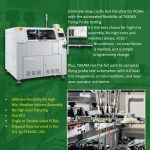
Flex Shock and Vibration
PSAs and carefully chosen connectors can reduce the shock of intense conditions.
A reader has a flexible circuit application that experiences significant shock and vibration in service. Are there special rules or guidelines to follow for such applications?
Flexible circuits are inherently robust in high shock or vibration environments due to their ultra-low mass. Their flexibility comes from the use of very thin materials, resulting in a lightweight final product. Beyond the natural tolerance for shock and vibration, however, additional features can be incorporated to enhance their performance in demanding applications.
Flexible circuits can endure various levels of shock, ranging from light vibration (less than 100G force), common in the cab of an off-road vehicle, to ultra-high shock (20,000+ G force) experienced in guided munitions. The level of ruggedizing depends on whether the application is on the high side, low side or somewhere in between.
Read Full Article

Characterizing Etchback and Dielectric Loss Tangent
Fabrication-aware simulations to aid PCB design success.
by Tim Wang-Lee, Ph.D.
As engineers design printed circuit boards (PCBs) to operate at higher data rates, the system’s signal integrity becomes increasingly sensitive to the variation in the fabrication process. A practical design is a software-defined design that includes realistic fabrication variation.
Typically, the PCB material properties in electronic design automation (EDA) software have default values. These ideal values for the material properties and PCB cross-sectional geometry are often called the as-designed values. On the other hand, after fabrication, the as-fabricated properties are the measurable numbers and dimensions from a physical board.
Although these ideal, as-designed values provide adequate performance prediction, it is increasingly important to include as-fabricated values for material properties and cross-sectional dimensions in the simulation to achieve first-pass product success and reduce the number of board spins.
Read Full Article
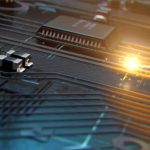

What is the Best Material for a High-Speed PCB?
Consider return loss and insertion loss – but don’t stop there.
by Zachariah Peterson
Material selection for high-speed printed circuit board design is one of the most common instances where a PCB becomes overengineered. Many of the high-speed PCB design guidelines available on the internet provide generalized recommendations and suggest advanced materials that may not always be necessary for digital systems. In fact, many high-speed PCB products are manufactured using less advanced, moderate-loss FR-4 material.
Advanced materials, such as Megtron or PTFE-based materials, might be encountered in commercial products. These material sets become necessary when channel bandwidth requirements extend into the GHz frequency range. The required operating frequency range and available material thicknesses are two of the most significant factors influencing high-speed PCB material selection. The following will help with understanding these materials and matching them to different digital interfaces.
Matching High-Speed PCB Materials by Frequency
High-speed PCBs are characterized by the edge rates of signals propagating in the design and the bandwidth of physical channels used to transmit those signals. Digital interfaces in high-speed PCBs require channels to have a minimum bandwidth to transfer enough power in a signal between the driver and receiver sides of a digital interface. Because all PCB materials exhibit some absorption (insertion loss) and conductor losses, these materials ultimately limit the available channel bandwidth.
Read Full Article
Sequential Lamination in PCB Manufacturing
Higher layer count boards with mechanically drilled blind or buried vias may be built separately, then laminated together.
by Akber Roy
Sequential lamination is a fundamental manufacturing technique in an era of modern PCB fabrication and is a concept that must be especially understood when manufacturing high-density interconnect (HDI) PCBs with blind and buried vias.
Fabricators collaborate closely with designers to prepare their Gerber, ODB++ or IPC-2581 data – the input data for PCB manufacturing. This collaboration ensures that designs are equipped (to varying degrees) with clear, detailed instructions from the outset. For designers and design engineers, this means defining the stackup with all the requirements related to impedance control and sequential lamination.
Sequential lamination is one of the processes used to form mechanically drilled blind or buried vias. In this process, a PCB is built up layer by layer, inserting a dielectric layer between a layer of copper and an already-laminated sub-composite. HDI PCBs undergo this process when different combinations of layers and via structure types are required. Figure 1 shows an 8-layer sequential build, constructed as two separate 4-layer sections and then laminated to make an 8-layer circuit board.
Read Full Article

The Art of Corrosion
An analysis of copper shorting caused by moisture and various residues.
by Terry Munson
Moisture reacts with high levels of weak organic acids, chloride and sulfate residues, leading to copper shorting. Poor adhesion from a low-pressure overmold exacerbates the issue.
The corrosive residues then dissolve the copper at the edges of the solder pads, and voltage bias drives the formation of dendrites. This creates a small gap at the board surface interface that permits moisture to ingress. The resulting colorful metal short exhibits is a result of the different states of the copper, voltage influences and organic materials from the substrate surface, which has titanium and silica in the white solder mask.




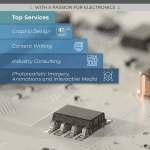

‘We Try to Take Away All the Barriers’
The market for recycled electronics, and what companies can do with excess stock.
by Mike Buetow
Circularity and inventory management intersect two key areas for electronics manufacturers. They are problems as old as the industry. In the early 1990s, for instance, an entrepreneur named Jerry Haller had an idea for a component exchange system set up much like trading financial stocks on Wall Street. He called the operation Fast Parts. It never caught on, however, nor did the many attempts others made to emulate it.
A few decades later, however, the industry might finally be ready for sustainable resource management.

Component Sense is an Edinburgh, Scotland-based company that leads electronics manufacturers toward zero waste. They take brand new, perfectly good excess components and redistribute them to other manufacturers for use. The impetus, as founder and chief executive Kenny McGee recently explained to Mike Buetow for the PCB Chat podcast, was to help manufacturers carrying huge volumes of excess inventories on their balance sheets, while also providing a path for using those parts so they aren’t ultimately landfilled. The company’s journey has even led to a self-produced documentary on the e-waste sites in Ghana.
Read Full Article

PCD&F

Antenova Inpai Cellular Antenna
Inpai SMD cellular antenna is for NB-IoT and CATM on 4G/LTE networks, including telematics. Measures 35mm x 8mm x 3.3mm with a clearance of 35mm x 13mm. Has a slightly smaller footprint than Lucida antenna. Made with high-grade dielectric constant laminate substrates.
Antenova

atg Luther Maelzer A9L Flying Probe
A9L large format flying probe tester handles circuit boards up to 36″ x 26″ (915mm x 660mm). Features eight test heads driven by linear drives for speed of up to 230 measurements/sec. Is said to eliminate limitations due to test point density or fine-pitch contacts down to 35µm and features embedded component test, 4-wire Kelvin measurement capability with an accuracy of +/-0.025mΩ, HiPot and latent defect testing.
Mycronic / atg Luther Maelzer
CA

Accu-Assembly AccuCart Smart Rack
AccuCart Smart Rack for Feeders manages feeder management and inventory tracking in surface mount technology (SMT) assembly environments. Offers native support for Fuji and Yamaha feeders, using the feeder’s electronic ID to automatically identify reel and part number currently loaded, eliminating need for manual scanning or human intervention. Seamless integration with placement machine databases ensures accurate, up-to-the-minute inventory control. Pick-to-Light system illuminates exact feeder location when part number is requested via tablet or PC. Intuitive system reduces search time, enhances picking accuracy and accelerates line changeovers. For high-mix, low-to-mid volume production environments.
Accu-Assembly Inc.
Cybord Real-Time Interception (RTI) Tool
Real-Time Interception (RTI) visual AI-powered software is said to prevent defective components from being assembled on printed circuit board assemblies (PCBAs) in real time. Analyzes bottom view of each component in milliseconds and discards faulty components before placement. Is integrated into Fuji’s NXT III placement machines; other machines pending. Reportedly identifies every type of defect. Is a flexible, drop-in software. Offers analytics and monitoring.
Cybord

Additive Manufacturing
“Inkjet-Printed Electronics for Rapid and Low-Cost Prototyping of Digital Microfluidic Devices Using an Off-the-Shelf Printer”
Authors: Babak Kamali Doust Azad, et al.
Abstract: Digital microfluidics (DMF) provides a versatile platform for lab-on-a-chip (LOC) systems to dispense, mix, merge and separate discrete droplets at the nanoliter to microliter scale with high precision and reproducibility. Inkjet printing offers a cleanroom-free alternative for fabricating electrodes, potentially replacing existing methods even for mass production of DMF devices, by reducing design complexity, fabrication time and cost.
Recent research explored inkjet printing of various conductive materials such as copper, gold, silver, graphene and carbon-based inks on multiple substrates. Researchers have found inkjet-printed devices for various applications, including 13-step rubella virus (RV), IgG immunoassay, microfluidic cancer biomarker detection, and electrochemical impedance spectroscopy for detecting picomolar concentration levels of heavy metals. However, many research groups still rely on expensive material printers for inkjet printing of electrodes, with costs reaching $40,000. This price can make such printers inaccessible to many researchers, necessitating the development of fast and cost-effective electrode printing protocols using unmodified desktop inkjet printers. Their work also has the potential to substantially reduce the costs associated with mass production of DMF devices.
The authors present a detailed report on implementing single-plate DMF using an office inkjet printer and accessible electronic modules. This approach enables rapid and cost-effective prototyping outside of a cleanroom environment.
The focus on single-plate devices stems from their simpler fabrication process and ease of operation, making them more suitable for rapid prototyping and experimentation. The authors thoroughly characterize a novel inkjet printer to print electrodes of Ag-ink on polyethylene terephthalate (PET) and glass slide substrates between terms here achieving maximum conductance.
Silver (Ag) offers high electrical conductivity, relative affordability compared to gold and conductive oxides, and excellent chemical stability. Three different dielectric materials – SU8, parafilm, and tape – are evaluated in terms of minimum AC and DC actuation voltages. The authors designed the actuation setup from scratch using common electronic modules and components. They demonstrate the efficacy of their approach by manipulating droplets within a micromixer design based on the fabricated inkjet-printed DMF chips. Mixing is a fundamental function in LOC devices, and this demonstration highlights the potential of the authors’ printed electronics approach for developing various LOC applications.
The authors employ image processing to assess the mixing process, further validating the accessibility and effectiveness of the developed inkjet printing workflow. The presented approach can adapt to similar off-the-shelf printers, broadening the available equipment for inkjet printing. (Scientific Reports, Feb. 7, 2025)
Read full article


